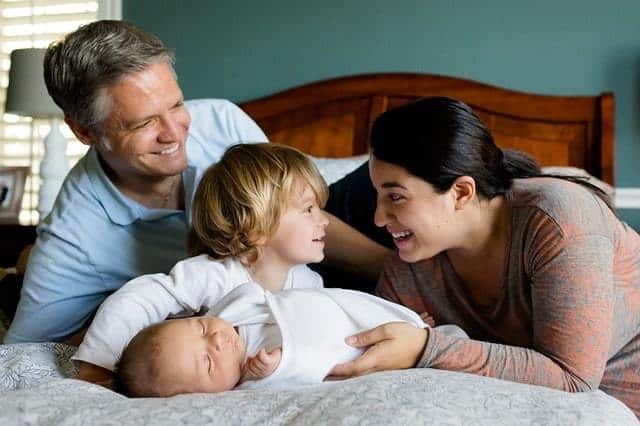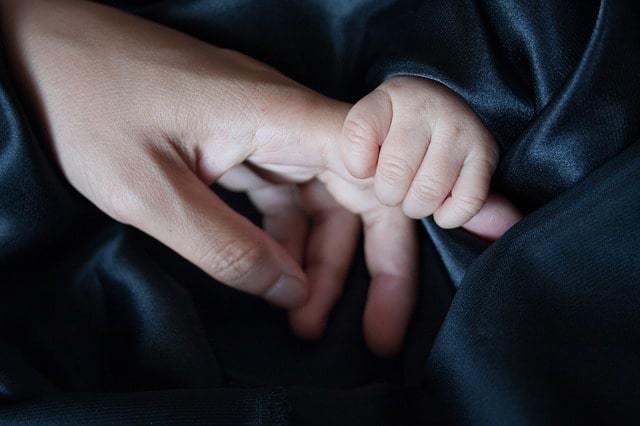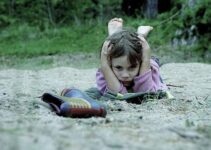What is separation anxiety?
Tears, clinginess, and tantrums are all common reactions to separation from a parent or a caregiver in the early stages of child development. These behaviors are also some of the signs of separation anxiety — feelings of fear and distress in those situations when a child is separated from a parent or a caregiver they are attached to.
Even though separation anxiety is a stage of normal emotional development, many parents find this behavior concerning and difficult to handle. There is a lot of useful information and advice to help parents deal with this delicate phase of their child’s development.
Table of Contents
- What is separation anxiety?
- When does separation anxiety start?
- What are the signs of separation anxiety?
- How long does separation anxiety last?
- When should you seek professional help?
- Can separation anxiety turn into something more serious?
- What contributes to the intensity of separation anxiety symptoms?
- What if you as a parent start feeling anxious about separation?
- What can you do to help your child cope with separation anxiety?
- What comes after separation anxiety?
When does separation anxiety start?
Separation anxiety usually emerges in the period between 4-8 months of age, up to three years.
The exact timing, duration, and intensity of separation anxiety are different for every child. Separation anxiety does not show before a baby has an understanding of object permanence (which happens between 4 and 8 months).
This means that a baby needs to be able to understand that their parents or caregivers do not cease to exist once they are out of sight — if I can’t see mom or dad, they are not with me but are somewhere else. It is in this time frame that they start understanding that a parent/caregiver can leave them to go elsewhere.
What are the signs of separation anxiety?
When experiencing separation anxiety, a child can have a wide range of reactions that differ in intensity and duration. The child’s reactions also depend on how old they are and how aware of the situation they are.
For example, toddlers and preschoolers are usually more aware of where and why you are leaving and when you are coming back, which may cause them to feel more anxious. At the same time, they are better at reading the signs of your own reluctance to leave them and know what it takes to get you to stay.
Here are some of the typical signs of separation anxiety:
- Crying when a parent/caregiver is leaving
- Clinginess, refusing to physically separate themselves from a parent/caregiver
- Temper tantrums
- Pushing others away and trying to get to a parent/caregiver
- Trying to stop a parent/caregiver from leaving
This is one of the most stressful periods for parents to deal with. Turning your back to a crying child is never easy. It tends to awake feelings of guilt and insecurity in your own decision-making. It is very important that you, as a parent, understand your own feelings in the face of these challenges. Child’s anxiety can feed into parents’ anxiety and vice versa.[1]
How long does separation anxiety last?
Separation anxiety tends to fade with learning and experience, usually by the age of three. Children tend to get better at coping with the absence of parents while learning to connect (develop attachments) to others.
However, the exact duration of separation anxiety varies, as it depends on a lot of factors. Some of those factors are:
– parent behavior in situations of separation
– the nature of the relationship between a child and their parent/caregiver
– the nature of attachment
– life events that happen before or during the first experiences with separation
– individual development — cognitive, socio-emotional, physical
– genetics
When should you seek professional help?
No matter how intense your child’s initial reactions to the feeling of anxiety are, you will see your child learn to adapt to new circumstances minutes after you are gone. If the separation routine repeats every day, the time spent crying will slowly start decreasing.
However, there are some cases when the symptoms of anxiety tend to persevere and intensify over time. If you are, for example, taking your child to kindergarten for two weeks or a month now, and their reaction is showing no improvement whatsoever, it’s good to consult with a professional.
Also, if you see that the reaction is not age-appropriate and interferes with your child’s functioning — such as refusing to stay in school without you — it is recommended you consult with a professional. A child psychologist, child psychotherapist, or a psychiatrist can shed some light on what could be done differently to help your child through difficult separation anxiety.
Can separation anxiety turn into something more serious?
While separation anxiety is a normal part of emotional development, separation anxiety disorder is not. Separation anxiety disorder is characterized by intense symptoms of anxiety that significantly affect and interfere with your child’s everyday functioning.
The symptoms of separation anxiety disorder include:
- Intense fear of something terrible happening to a person a child is attached to
- Intense worry that a person they are attached to won’t come back for them
- Strong emotional and behavioral reaction at the thought that a person a child is attached to is leaving
- Difficulties falling asleep and/or bed wetting
- Psychosomatic symptoms such as headache, nausea, stomachache, etc.
This condition is diagnosed and treated by mental health professionals. The treatment includes psychotherapy, with or without medication (depending on the severity of the symptoms and the child’s age).
You can read more about separation anxiety disorder here. (insert link to article #2)
What contributes to the intensity of separation anxiety symptoms?

1. The relationship between a parent or a caregiver and a child
How attached a child is to a caregiver and a parent can affect their reaction to separation. An insecure attachment may induce feelings of anxiety.
2. The history of separations
Unpleasant separation experiences can evoke anxiety in the face of new ones. This can occur in those situations when a parent, caregiver, or child needs to go away, are hospitalized, or have gone through traumatic experiences that included separation.
The experience of being with other people besides parents and caregivers can positively affect your child’s reaction to separation. Spending time with other family members or close friends allows them to experience that not being with a parent is not necessarily scary and threatening.
3. Life events that happen before or during the first experiences with separation
These may include the birth of a sibling, change in surroundings (moving to a new place), tension at home, a parent/caregiver being away, etc.
4. Parent behavior towards children
There’s research that shows that parent intrusiveness — taking over of tasks that children are or could be doing on their own — increases child dependence on parents/caregivers. This affects the intensity of separation anxiety. [2]
Parents can also be quite anxious when having to be apart from their children, which they show in different ways through various non-verbal cues that children use as an indicator of danger. For example, a longer embrace when saying goodbye or changes in tone of voice.
5. Individual development: cognitive and socio-emotional development, physical health
A child may have certain delays in their cognitive and socio-emotional development that make communicating to others and adapting to a new environment very challenging. For some kids, physical fragility can affect emotional fragility, especially if this is combined with parents’ overprotection.
What if you as a parent start feeling anxious about separation?
If you feel that your anxiety over your child’s separation anxiety is significantly affecting your consistency in behavior, your decision-making, patience, and your own well-being, make sure you talk to a professional.
Dealing with separation anxiety in children, and especially separation anxiety disorder, is very challenging. You have every right to look for support and guidance.
What can you do to help your child cope with separation anxiety?

Here are a few concrete examples of what you can do to effectively handle some of the common, everyday challenges:
- Keep good-bye rituals short.
Whatever your good-bye ritual is, try to keep it as short as possible. The anxiety tends to increase with the duration of this transition time. Some parents hear this as “cold.” However, short doesn’t have to be cold — you can be creative, warm, and sweet with short goodbyes as well. Hand your child a special toy or their favorite blanket, or give them hugs and kisses.
If the environment your child is walking into is completely new, it may be a good idea to first allow your child to get to know it with you being present.
By doing this, you are helping them understand this new situation as safe as they explore and interact with new people. The next time you come to this place, it will be easier for them to adapt to it without it, as it will be familiar to them!
- Walk the talk.
Consistency is super important — you have to do what you say. Stick to the time you say you’ll be back. This is important for your child to learn to trust you and to develop a sense of ability to be on their own without you. So, if you promise you will come back in two hours, come back in exactly two hours.
A child is likely to lack a clear understanding of how long two hours is, so try being more specific. Instead, say: “You will play with auntie, then have a snack and when you finish, I will be back.”
- Make sure they know how loved they are.
This one is important at all times but is especially important when you are leaving. This connects to our first tip, keep goodbyes warm. Make sure your child knows you love them and care about them (but still make it short and turn your back to their cries). Sounds a bit cruel, but it’s for their good!
- Practice being apart from your child.
Experience can teach much better than words. This is why it is ideal for your child to experience time away from you. Schedule time for playdates, have your parents come to babysit, leave them at your parents’ or good friends’ house for an hour or two. Separation is usually much harder for parents than for children — this is why it’s important that you give yourself permission to practice as well!
- Control the expression of your anxiety.
Maintaining your calm is one of the most challenging tasks here. Children read non-verbal signs — your worried look, the change of the tone in your voice, the intensity of your heartbeat when you hug them. Try your best to act as if everything is completely fine, that there’s nothing dangerous or upsetting about you leaving, say your goodbyes and leave.
- Let your child do what they can independently.
Cultivate your child’s sense of independence. Don’t interrupt them by taking over something they are playing with or working on. Be there to support them when they come to you signaling that they need help. Otherwise, let them do their thing!
- Teach your child ways to play.
Try to give your child opportunities to discover what is interesting for them to play with. Model ways to play with different materials, toys, and people. Also, give them time to explore ways they can structure their own play. Play can be very useful in alleviating the symptoms of anxiety. [3]
- If you can, set up babysitting with people your child knows.
It’s easier to understand that the situation is not threatening when you can see a familiar face — family, close friends, or a babysitter they are familiar with.
If you are leaving your child with someone they haven’t had a chance to interact with, give them an opportunity to get acquainted in a safe environment. When you are present, they will feel that the environment is safe enough for them to connect with this new person.
- Facilitate secure attachment.
Provide warmth and comfort, be responsive to your child’s needs and available to help out when they need you.
Useful Read: 14 ways Attachment theory can help you become a better parent.
- Try having separation times after nap or feeding times. Separation is better handled after babies are well-rested, fed, and in a good mood.
- Increase the predictability of everyday life. Help your child predict your behavior by setting up routines — morning routines, feeding routines, and bedtime routines, for instance.
What comes after separation anxiety?
Separation anxiety is a normal phase of emotional development. With your warmth, patience, and consistency, kids learn how to handle their newly-won independence. The phase may last shorter or longer, but they end up finding ways to manage the feeling of discomfort when you are gone.
This does not mean that you won’t encounter the same reactions here and there again. The chances are that in some delicate situations — sickness, intense stress, or pain — your child will demand your attention and will want to ensure that you are by their side at all times.
However, these exceptions are actually the sign of trust, a bond that exists between you and your child that allows them to feel safe when with you.
- Shamir-Essakow, G., Ungerer, J. A., & Rapee, R. M. (2005). Attachment, behavioral inhibition, and anxiety in preschool children. Journal of abnormal child psychology, 33(2), 131-143.
- Wood, J. J. (2006). Parental intrusiveness and children’s separation anxiety in a clinical sample. Child Psychiatry and Human Development, 37(1), 73-87.
- Milos, M. E., & Reiss, S. (1982). Effects of three play conditions on separation anxiety in young children. Journal of Consulting and Clinical Psychology, 50(3), 389.










